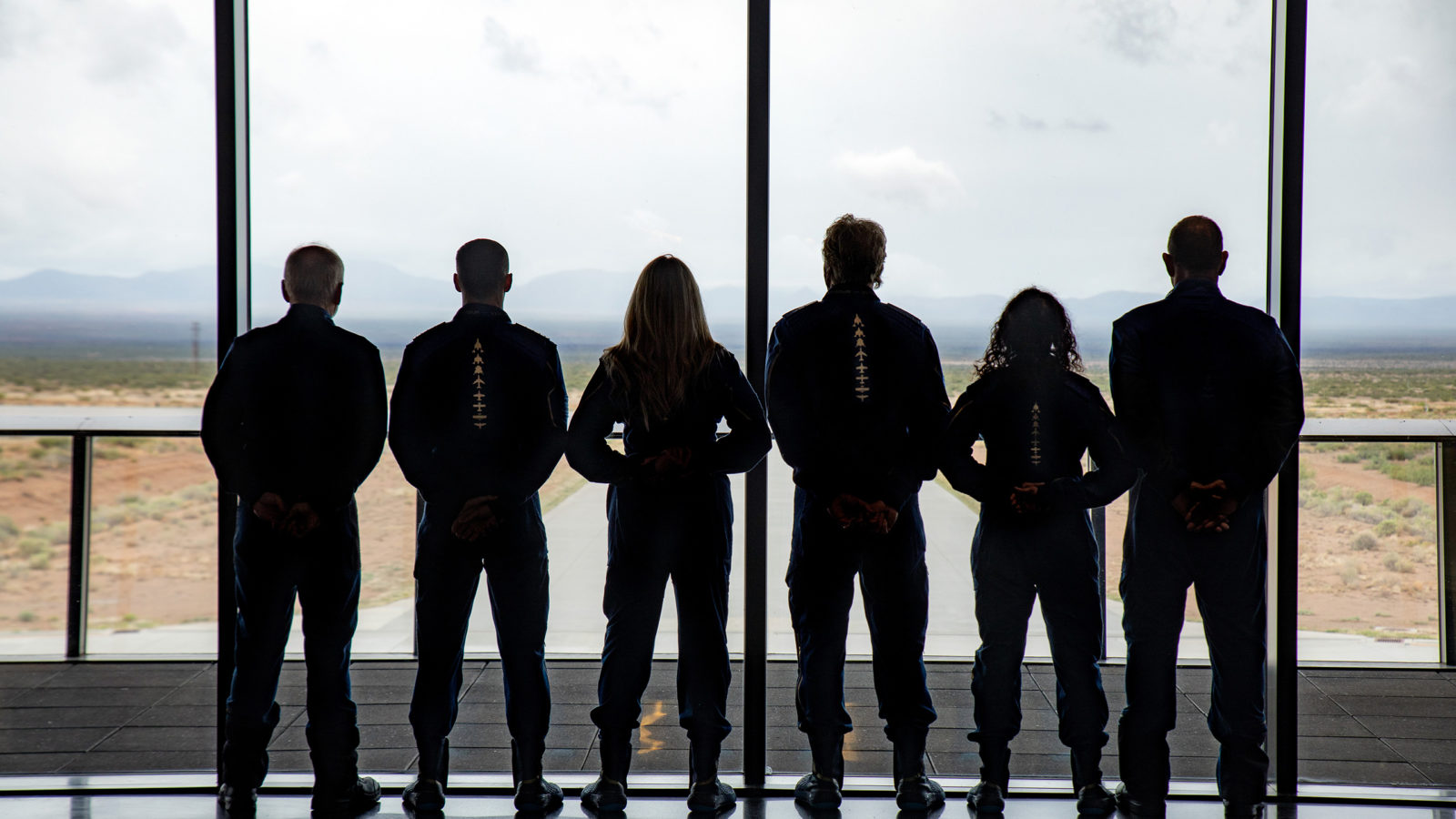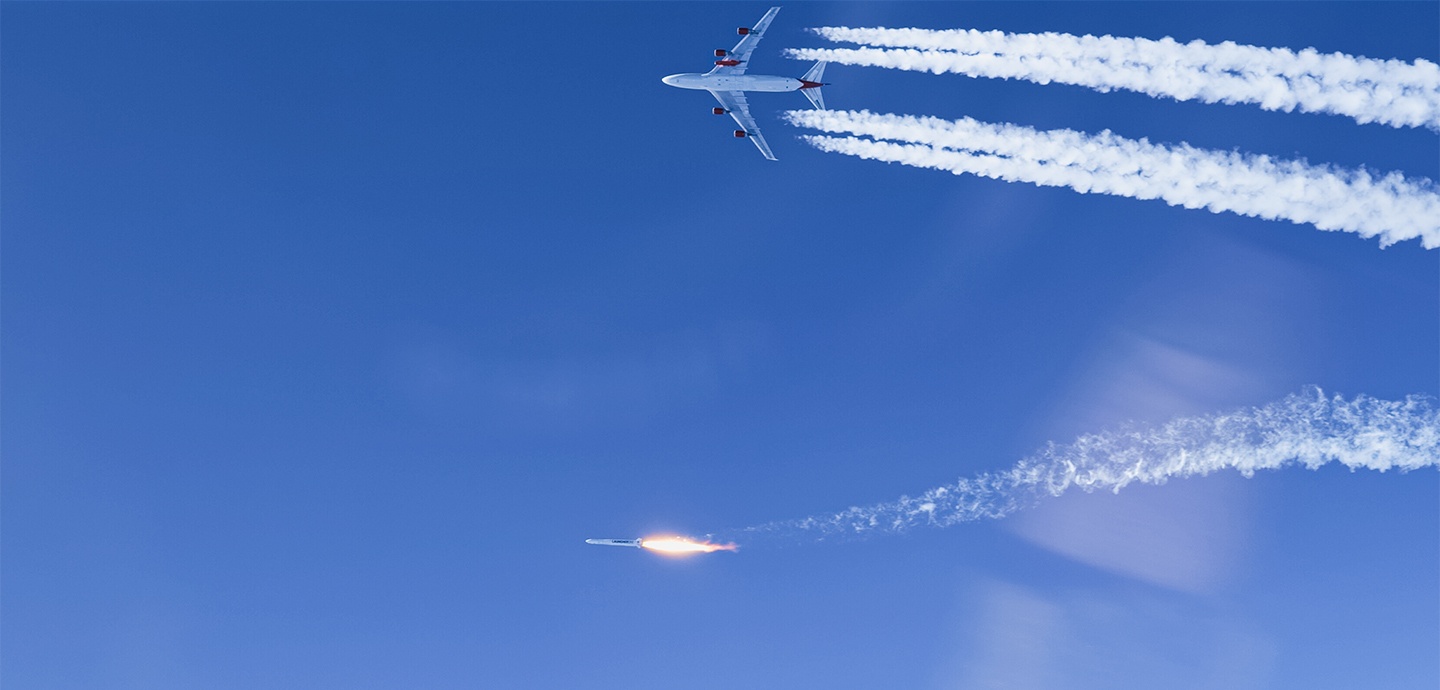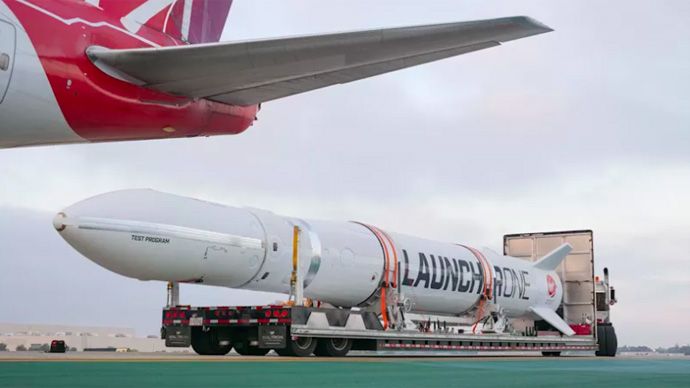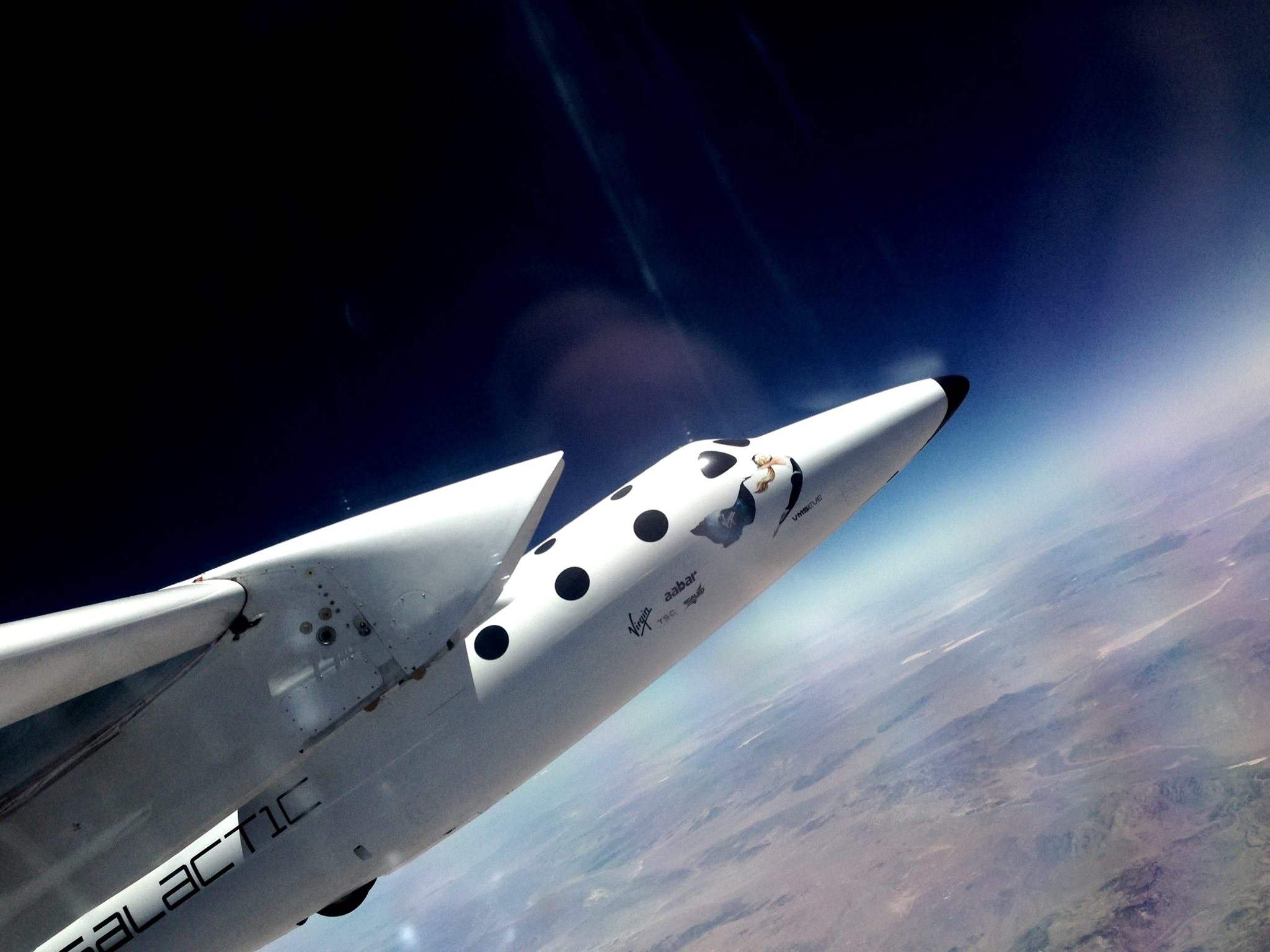Early this morning, Sir Richard Branson and Virgin Galactic achieved a major milestone in the development of commercial space travel. Along with a team of specialists, Branson traveled to the edge of space aboard the VSS Unity and made it safely back to Earth. In so doing, Branson and his company have also fired the latest salvo in the ongoing race between the titans of the commercial space industry (aka. NewSpace).
Continue reading “Richard Branson and Friends Reach the Edge of Space, and Lived to Tell About it!”Richard Branson will fly on SpaceShipTwo this weekend. Welcome to the New (Edge of) Space Race!
It’s no secret that the commercial space industry (aka. NewSpace) has become immensely lucrative in recent years, nor the fact that it has become intensely competitive as a result. To illustrate, one needs to look no further than the top three NewSpace companies in the world right now: SpaceX, Blue Origin, and Virgin Galactic. Between these three companies, all founded by billionaires with similar visions, a new space race has begun.
In recent months, the race has intensified as Jeff Bezos announced that he would be going to space on the inaugural flight of the New Shepard rocket. In response, Virgin Galactic founder and CEO Richard Branson announced earlier this week that he would fly aboard the VSS Unity as it makes its latest test flight. If successful, this mission – scheduled for Sunday, July 11th (weather permitting) – will see Branson become the first billionaire to go to space.
Continue reading “Richard Branson will fly on SpaceShipTwo this weekend. Welcome to the New (Edge of) Space Race!”Virgin Galactic Wins FAA’s OK to Fly Space Passengers: Which Billionaire Will Go First?
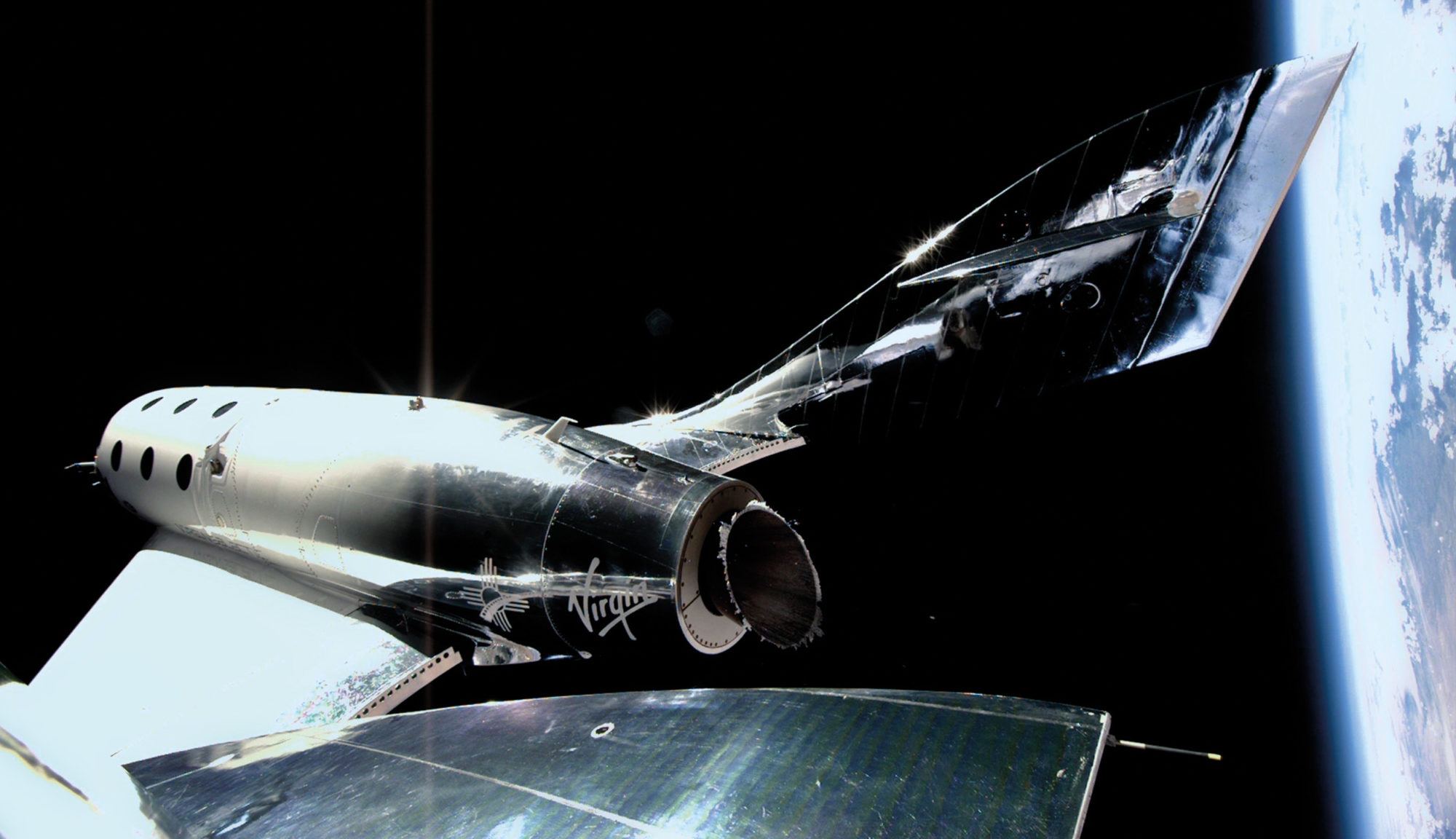
Virgin Galactic says it’s received the Federal Aviation Administration’s go-ahead to fly customers on its SpaceShipTwo rocket plane, marking a significant step in a commercial rollout that could also feature dueling space billionaires.
The FAA’s clearance came in the form of an update to Virgin Galactic’s five-year-old commercial space transportation operator license, the company said in a news release. The upgrade was based on an analysis of the results from Virgin Galactic’s most recent suborbital test flight, conducted in May at Spaceport America in New Mexico.
Continue reading “Virgin Galactic Wins FAA’s OK to Fly Space Passengers: Which Billionaire Will Go First?”Virgin Orbit Successfully Launches a Batch of Satellites From an Airplane
On Sunday, January 17th, Virgin Orbit conducted the second launch test of its LauncherOne rocket, which the company will use to deploy small satellites to orbit in the coming years. The mission (Launch Demo 2) went smoothly and validated the company’s delivery system, which consists of the rocket air launching from a repurposed 747-400 (named Cosmic Girl).
It also involved the successful deployment of 10 CubeSats which were selected by NASA’s Launch Services Program (LSP) as part of the agency’s CubeSat Launch Initiative (CSLI). The event began when Cosmic Girl took off from the Mojave Air and Space Port at approximately 10:50 A.M. PST (01:50 P.M. EST) and flew to a location about 80 km (50 mi) south of the Channel Islands in the Pacific Ocean.
Continue reading “Virgin Orbit Successfully Launches a Batch of Satellites From an Airplane”Virgin Orbit Shows off its “Launcher One”, a Rocket Carried by an Airplane
The commercial space sector is about to get a little more crowded. SpaceX and Blue Origin have created headlines with their ongoing development of reusable launch vehicles. Now Virgin Orbit‘s “Launcher One” is carving out its own niche in the commercial space market, as an efficient, flexible launcher of small satellites.
Continue reading “Virgin Orbit Shows off its “Launcher One”, a Rocket Carried by an Airplane”
Virgin Galactic Performs the Second Test of VSS Unity, Reaching Mach 1.9
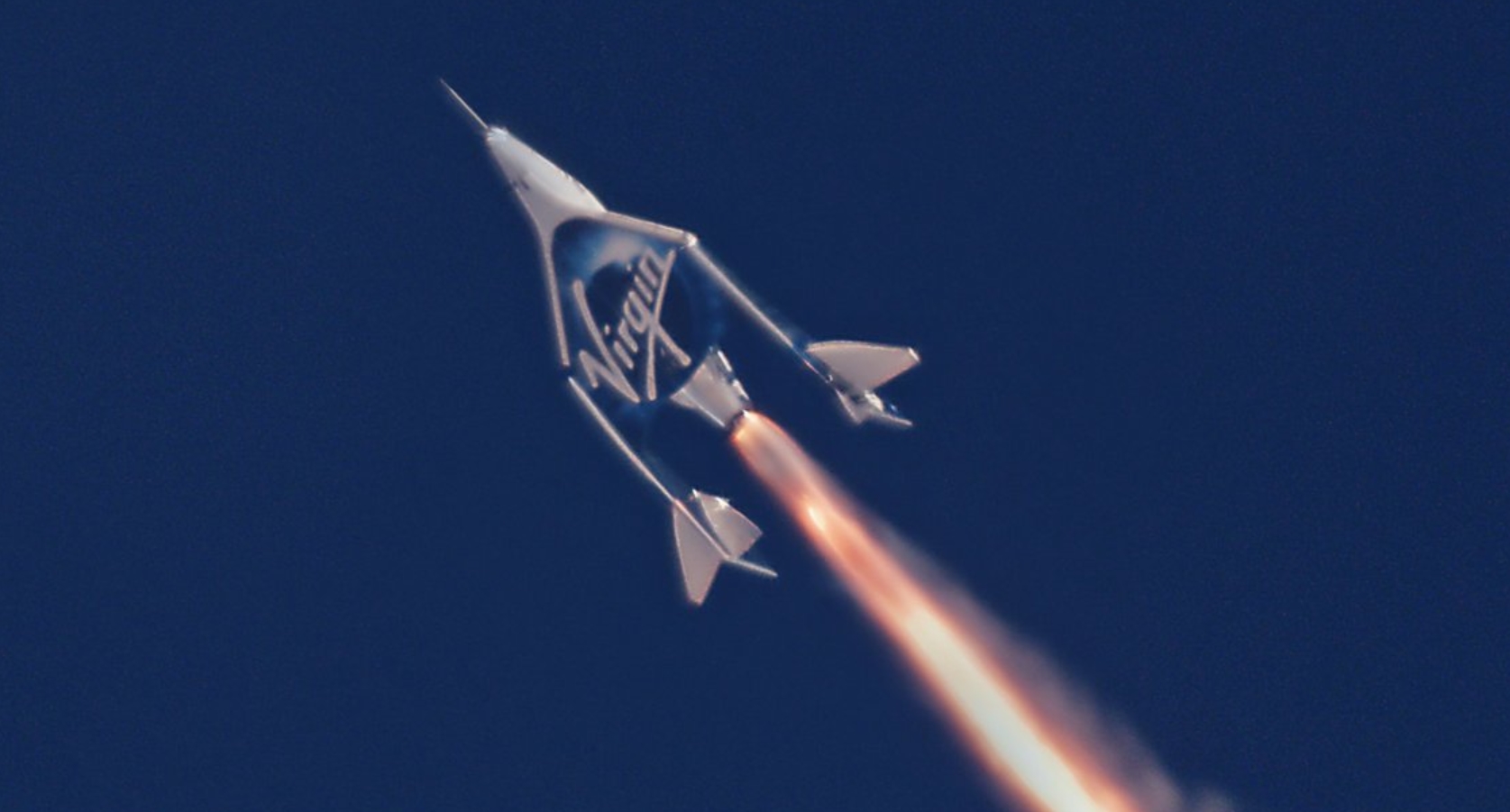
When it comes to the dream of commercial space exploration and space tourism, a few names really stand out. In addition to Elon Musk and Jeff Bezos, you have Richard Branson – the founder and CEO of the Virgin Group. For years, Branson has sought to make space tourism a reality through Virgin Galactic, which would take passengers into suborbit using his SpaceShipTwo class of rocket planes.
Unfortunately, Virgin Galactic suffered a number of setbacks in recent years, at the same time that competitors like SpaceX and Blue Origin emerged as competitors. However, the VSS Unity (part of the Virgin Galactic fleet) recently conducted its second powered test flight from the Mojave Air and Space Port on Tuesday, May 29th. While this test is years behind schedule, it marks a significant step towards Branson’s realization of flying customers to space.
This was the second time that the VSS Unity flew since 2014, when the VSS Enterprise suffered a terrible crash while attempting to land, killing one pilot and injuring the other. The first propulsive test took place two months ago after several additional tests were performed on the craft. And with that last success, Virgin Galactic moved ahead with its second powered test earlier this week.
Today VSS Unity completed her second powered test flight in less than 2 months. Great job to all involved! #SpaceShipTwo pic.twitter.com/Iy7qAkweSC
— Virgin Galactic (@virgingalactic) May 29, 2018
The focus of the latest test flight was to learn more about how the spaceship handles at supersonic speeds. It was also intended to test the control system’s performance when the vehicle was closer to its ultimate commercial configuration. As the company stated, “This involved shifting the vehicle’s center of gravity rearward via the addition of passenger seats and related equipment.”
This statement is a possible indication that the test program is reaching the final stretch before Virgin Galactic allows passengers on the vehicle. However, the company will need to conduct a full-duration flight (which will include a full-duration burn of its rocket motor) before that can happen. This latest test involved only a partial rocket burn, but nevertheless demonstrated the spacecraft’s capabilities at supersonic speed.
The company live-tweeted the entire event, which began at 8:34 AM with the VSS Unity and its carrier mothership (VMS Eve) taxing out to the runway for final checks. For this flight, the pilots were Dave Mackay and Mark “Forger” Stucky while CJ Sturckow and Nicola Pecile piloted of the carrier aircraft. At We have take-off. VMS Eve & VSS Unity have taken to the skies and have begun their climb.”
By 9:43 AM, the company announced that the VSS Unity had detached from the VMS Eve and was “flying free”. What followed was a series of live-tweets that indicated the ignition of the VSS Unity’s rocket motor, the shutting down of the motor, and the raising of the tail fins to the “feathered” re-entry position. By 9:55 AM, the company announced a smooth landing for the VSS Unity, signaling the end of the test.
Back on the ground pic.twitter.com/iIrj6jIFM4
— Virgin Galactic (@virgingalactic) May 29, 2018
Branson, who was at the Mojave Air and Space Port for the test, released the following statement shortly thereafter:
“It was great to see our beautiful spaceship back in the air and to share the moment with the talented team who are taking us, step by step, to space. Seeing Unity soar upwards at supersonic speeds is inspiring and absolutely breathtaking. We are getting ever closer to realizing our goals. Congratulations to the whole team!”
Branson was also at the center to take in a tour of the facilities of The Spaceship Company (TSC), a sister company of Virgin Galactic that is responsible for developing Virgin Galactic’s future fleet. While there, Branson viewed the next two spaceships that TSC is currently manufacturing, as well as the production facilities for TSC’s spaceship rocket motors.
With the latest test flight complete, the company’s teams will be reviewing the data from this flight and making preparations for the next flight. No indication has been given as to when that will be, or if this test flight will include a full-duration burn of the motor. However, Branson was very happy with the test results, stating:
“Today we saw VSS Unity in her natural environment, flying fast under rocket power and with a nose pointing firmly towards the black sky of space. The pathway that Unity is forging is one that many thousands of us will take over time, and will help share a perspective that is crucial to solving some of humanity’s toughest challenges on planet Earth.”
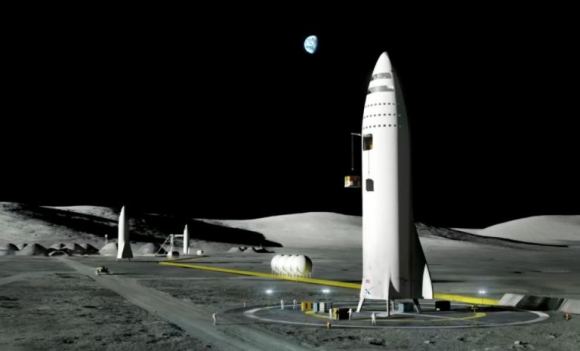
Meanwhile, Bezos continues to pursue his plans for sending passengers into orbit using his fleet of New Shepard rockets. And of course, Musk continues to pursue the idea of sending tourists to the Moon and Mars using his Big Falcon Rocket (BFR). And with many other private aerospace ventures looking to provide trips into orbit or to the surface of the Moon, there is sure to be no shortage of options for going into space in the near future!
And be sure to check out this video of the VSS Unity’s second test flight, courtesy of Virgin Galactic:
Further Reading: NASA Space Flight
Stephen Hawking Is Going To The Edge Of Space
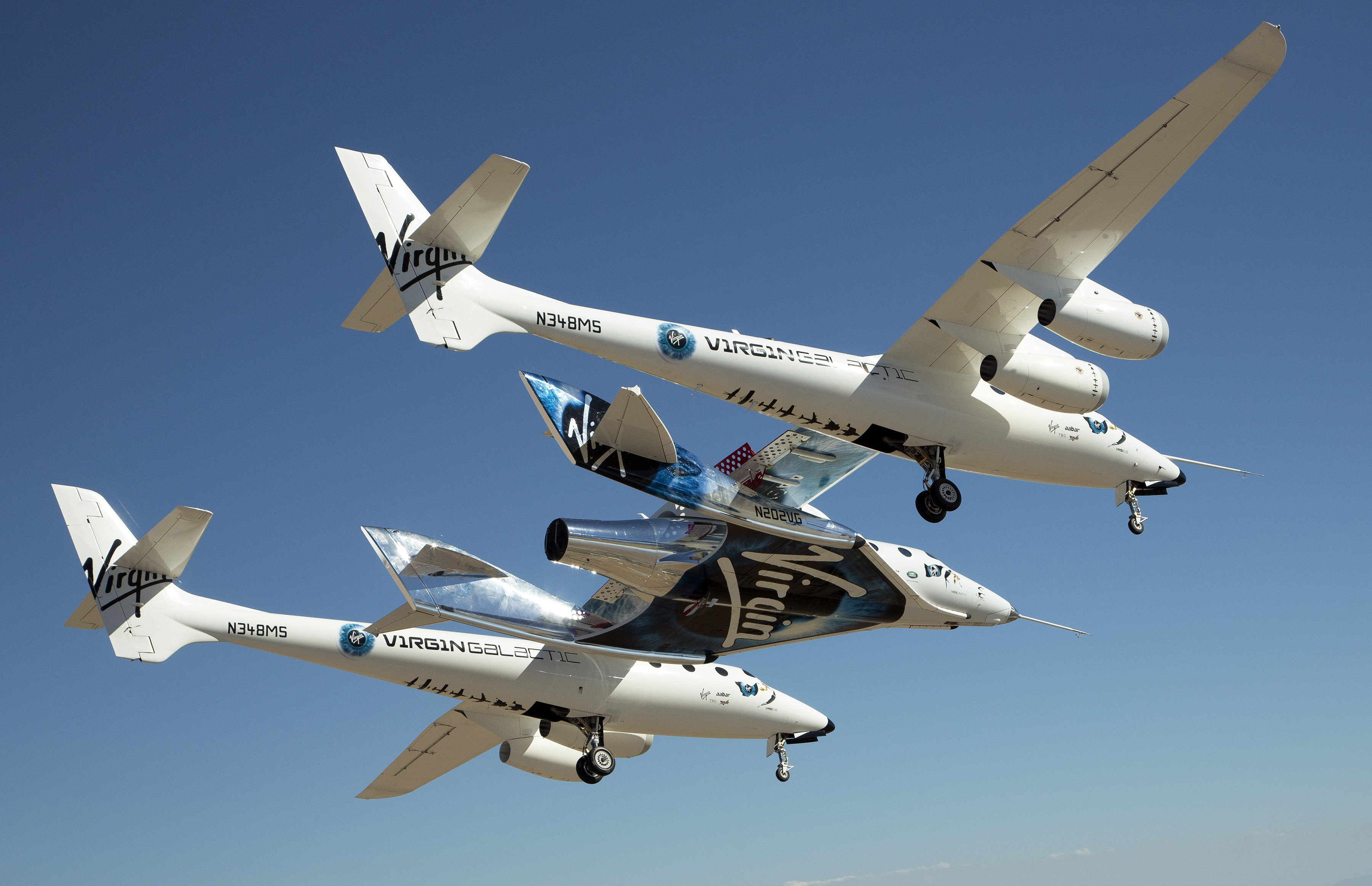
Stephen Hawking has spent decades theorizing about the Universe. His thinking on black holes, quantum gravity, quantum mechanics, and a long list of other topics, has helped shape our understanding of the cosmos. Now it looks like the man who has spent most of his adult life bound to a wheel-chair will travel to the edge of space.
In an interview with Good Morning Britain, Hawking said “Richard Branson has offered me a seat on Virgin Galactic, and I said yes immediately.” Hawking added that his “three children have brought me great joy—and I can tell you what will make me happy, to travel in space.”
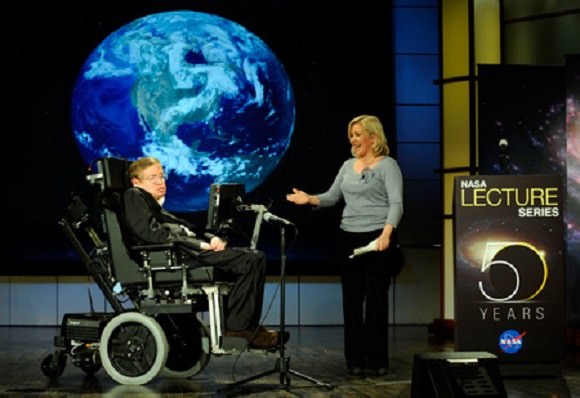
It’s all thanks to Richard Branson and his VSS Unity spaceship, which is still under development by The Spaceship Company. The Unity is designed to launch not from a rocket pad, but from underneath a carrier aircraft. By eliminating enormously expensive rocket launches from the whole endeavour, Branson hopes to make space more accessible to more people.
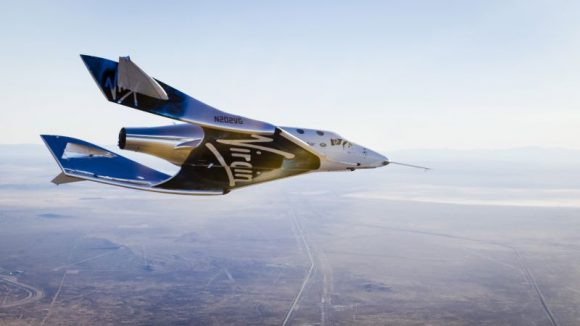
The Virgin Galactic spacecraft is carried to an altitude of about 50,000 feet, then released from its carrier aircraft. Its rocket fires for about 1 minute, which accelerates the craft to three-and-a-half times the speed of sound, then is shut off. Then, according to Virgin Galactic, passengers will experience a “dramatic transition to silence and to true weightlessness.”
As the video shows, the spacecraft is still in glide testing phase, where it is carried to altitude, then released. There is no rocket burn, and the craft glides down and lands at its base.
This spaceflight won’t be Hawking’s first experience with weightlessness, however. To celebrate his 65th birthday, Hawking travelled on board Zero Gravity Corp’s modified Boeing 727 in 2007. At the time, that zero-g flight was in preparation for a trip into sub-orbital space with Virgin Galactic in 2009. But the development of Virgin Galactic’s spacecraft has suffered setbacks, and the 2009 date was not attainable.
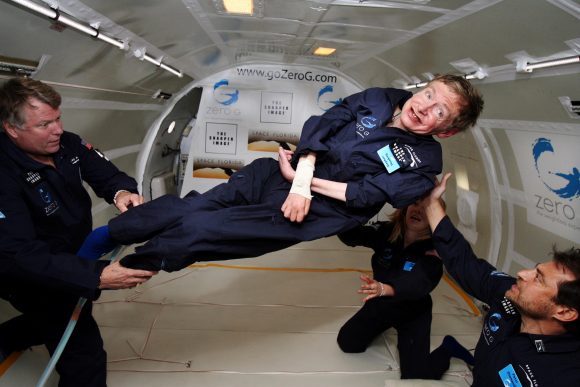
Virgin Galactic’s stated aim is to “democratize space,” albeit at a cost of US $250,000 per person. But somehow I doubt that Hawking will be paying. If anyone has earned a free trip into space, it is Dr. Stephen Hawking.
Update: NTSB Confirms SpaceShipTwo feathering was Prematurely Unlocked
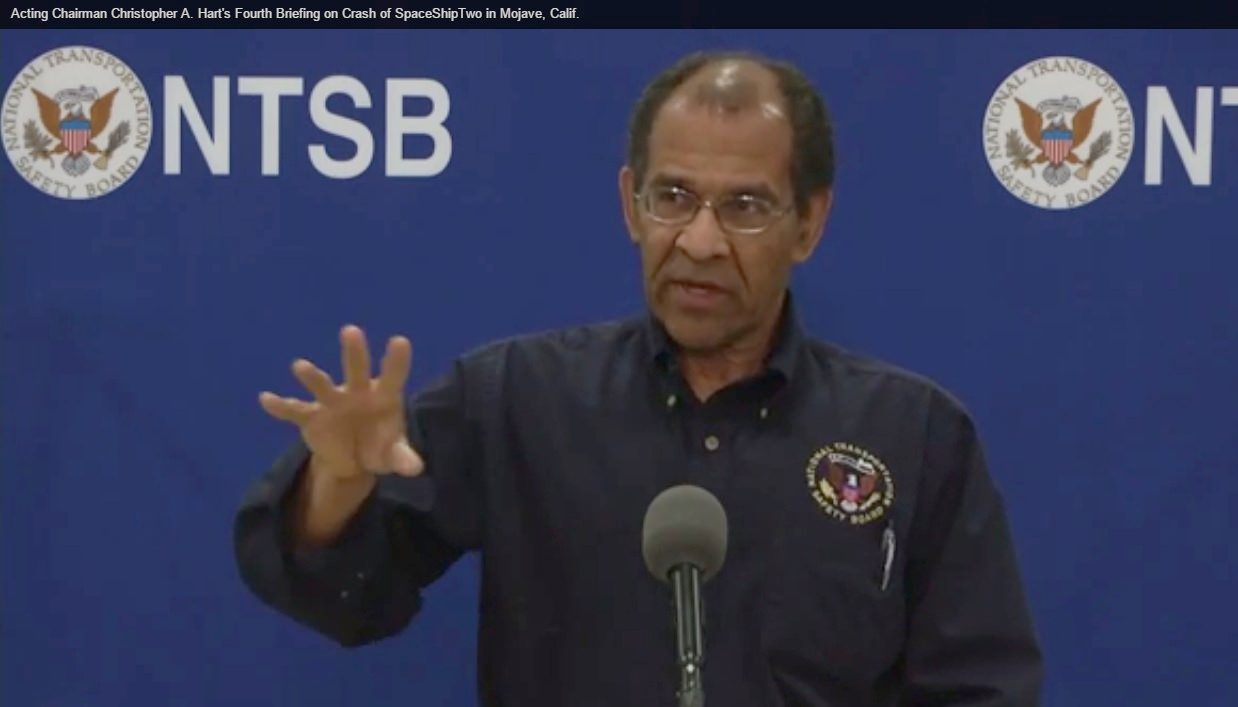
In a Monday afternoon press conference, acting NTSB chairman Christopher Hart confirmed that the safety lock on Virgin Galactic’s SpaceShipTwo feathering mechanism was prematurely unlocked moments before breakup. Hart also quickly stated that this would be the last on-site press conference. The NTSB is nearing the completion of data gathering and the team will be returning to Washington DC with the data to undertake the facts compilation followed by the analysis.
Hart reiterated that the test flight was rich in telemetry. He said that the supply of data could expedite the analysis but he cautioned that they still expect the investigation to take 12 months to conclude and release a final report. He also added that as analysis proceeds, the NTSB would provide updates and he encouraged interested parties including the public at-large to undertake analysis of the available data; however, he emphasized that the conclusions drawn would be based on NTSB analysis alone.
From the data released and statements by Hart during the press conference, it is now clear that the NTSB recognizes that the feathering was not to be deployed until SpaceShipTwo achieved mach 1.4. The statement that acting chairman Hart made appeared to be explicitly referencing the Flight Card – the plan of actions and constraints for the flight. If this was the specific wording on the Flight Card, then it would have permitted a pilot to interpret it in various ways.
Sunday, it was reported that SpaceShipTwo was flying at about Mach 1.2 when break up occurred. As a private pilot familiar with the impact that flight conditions have on operations of an aircraft, I would add that the SpaceShipTwo constraint of mach 1.4 for executing feathering is likely intended to be viewed by the pilots-in-control as the descent speed after SpaceShipTwo had achieved maximum altitude during a flight to the edge of the atmosphere. During descent, mach 1.4 would be achieved at a much higher altitude where the air density is much lower and stresses from the feathering would also be much lower; SpaceShipTwo is designed to feather with those environmental conditions. During previous tests of SpaceShipTwo when feathering was tested at low altitude, the vehicle was flying far below mach 1, i.e., subsonic. The vehicle in that flight regime had no difficulty withstanding stresses during the test of feathering. It should be emphasized that the strict rules under which the NTSB proceeds with an investigation do not allow the investigators to inject assumptions based on their past experience.
A timeline of events leading up to catastrophic breakup of SpaceShipTwo was stated by the NTSB acting chairman:
10:07:19: SpaceShipTwo is released from the carrier craft, WhiteKnightTwo
10:07:21 SpaceShipTwo’s engine starts
10:07:29 SpaceShipTwo reaches mach 0.94
10:07:31: SpaceShipTwo exceeds the speed of sound – mach 1.02. Between 10:07:29 and 10:07:31, the feathering safety was unlocked.
10:0 7:34: All telemetry was lost
The NTSB has also created a new team responsible for evaluating the Human-Machine Interface (HMI) on SpaceShipTwo. HMI is a discipline that has gained increased interest within several manufacturing sectors, particularly in aircraft cockpit design. The performance of modern aircraft, places greater demand on human performance. The formulation of a Human performance team evaluating the HMI of SpaceShipTwo indicates that the NTSB wants to assess the quality of the cockpit control panels and whether the configuration of switches contributed to pilot error.
While most of the debris is confined to a 5 mile swath of desert, Hart stated that debris has now been found as far as 30 to 35 miles from the immediate debris field.
Besides the apparent focus by the NTSB on the unplanned feathering, Hart stated that they are checking the subsystems of the spacecraft for integrity – pneumatics, flight control, electrical, and so on.
Hart concluded the press conference by taking questions from reporters.
Q. Had the pilot been interviewed?
A. Not yet and not until he is fit to be interviewed.
Q. Was the Flight Card reviewed?
A. The NTSB has reviewed the flight card for procedures and constraints. According to Hart, the card stated not to release the safety lock of the feathering mechanism until mach 1.4. The Flight Card describes the steps that a flight crew is to take to complete a successful mission.
Q/A. Hart confirmed that 2 pilot actions were necessary for feathering. 1) Unlock the safety, and 2) engage feathering lever. U.T. – Hart could not say if both pilots were necessary, that is, shared the two step process.
Q/A. A reporter contentiously asked Hart who was in the right seat. Hart stated that he did not know and also was unwilling to assume that it was the co-pilot, Alsbury. The reporter probing him further asked about his statements from Sunday. Hart agreed that he was mistaken to have assumed on Sunday that it was the copilot.
Finally, a review of the NTSB press conference video, placed on YouTube, presented a clarification as text on video. It stated that the co-pilot was residing in the right seat and was responsible for unlocking the feathering. At this preliminary stage of the investigation, it would appear that Alsbury’s death in the accident was due to his premature unlocking of the feathering mechanism. Hart did not state this but the circumstantial evidence so far is pointing in that direction.
Reference:
Black Sky: Virgin’s Spaceship Carrier Takes To Air For 150th Time
As Virgin Galactic gets ready for its first space test of SpaceShipTwo — a feat widely expected to take place later this year — the private company recently posted a new photo of the carrier aircraft that will bring the spaceship to altitude for its kick to orbit. Called WhiteKnightTwo, the aircraft completed its 150th flight.
The post comes not too long after Virgin and others commemorated the 10th anniversary of SpaceShipOne’s first flight into space. The company subsequently sent the spacecraft there again, winning the Ansari X-Prize.
The Scaled Composites spaceship sparked an agreement with Virgin Galactic to start what the companies call the world’s first spaceliner, Virgin Galactic. The first test flight has been pushed back several years during development. Virgin founder Richard Branson has said he is planning to be on the first flight, along with some of his family.
Do You Know 80s Kid Who Inspired Virgin Galactic? Branson Asks For Help Ahead Of First Spaceflight
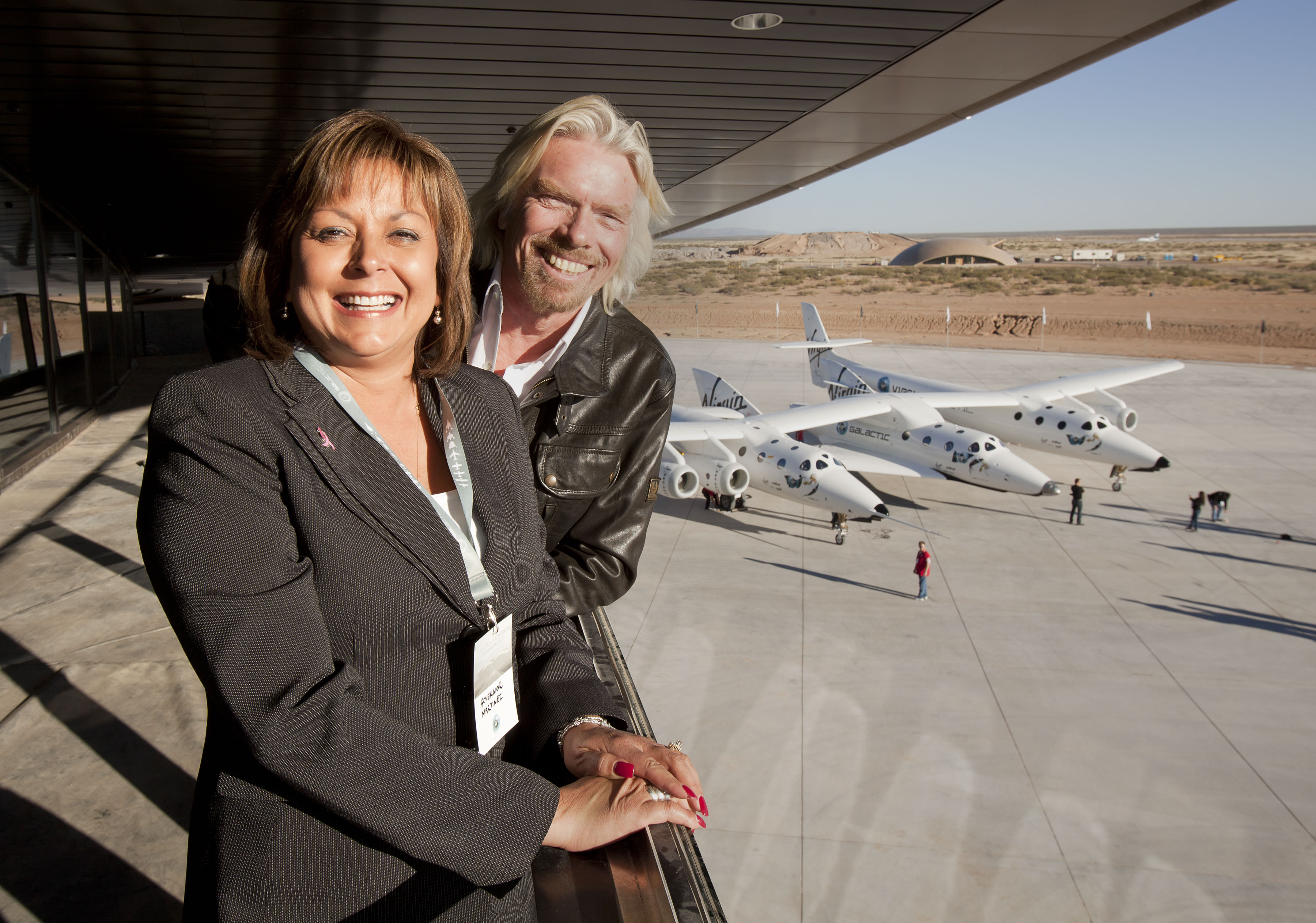
As Virgin Galactic aims for a spaceflight this year, founder Richard Branson is asking the public to help track down the kid (now an adult) who prompted him to start the company 26 years ago.
Above you can see a Virgin video showing an 1988 clip from an old BBC show called “Going Live!” Branson answered a question from a young fan, Shihan Musafer, asking if he’d go to space. Of course, you all know what his answer was.
“After that call, I set about registering the name Virgin Galactic,” Branson wrote in a blog post. “We’d love to track down Shihan to say a personal thank you for helping to inspire the idea with that phone call. We want to offer Shihan the chance to join Virgin Galactic as a VIP guest to witness a spaceflight.”
If you have any information, Branson encourages you to tweet @richardbranson and @virgingalactic with the hashtag #shihanmusafer. (Early results on Twitter show a lot of retweets and few ideas of how to find him.) Meanwhile, his company has been busy putting SpaceShipTwo through its paces, making powered test flights — such as this one you can see from January.


